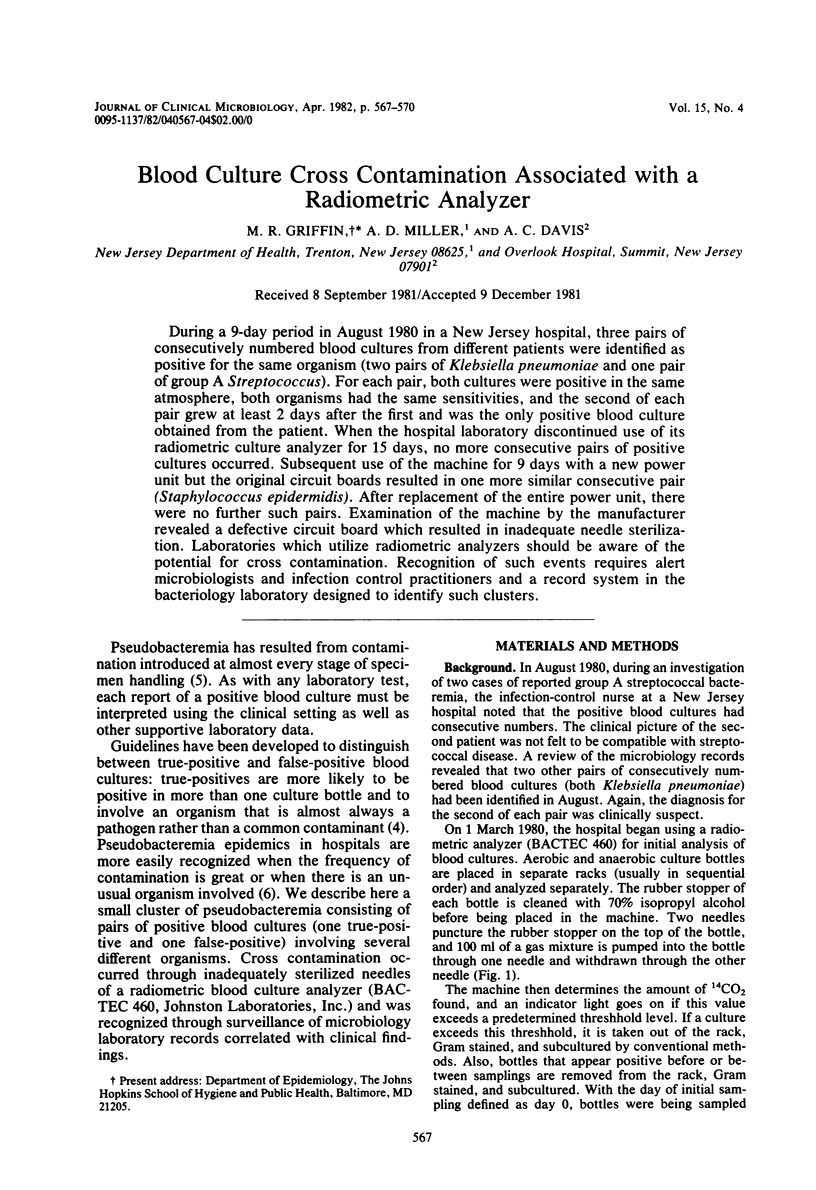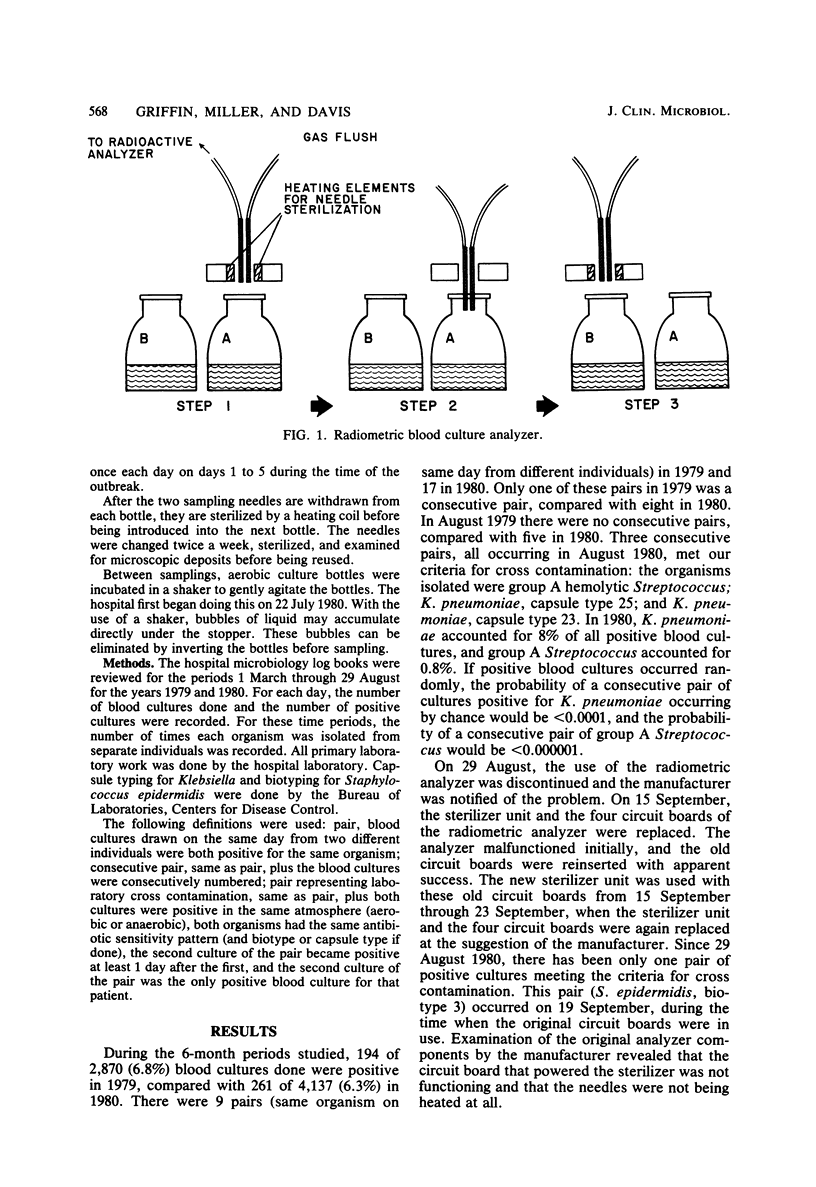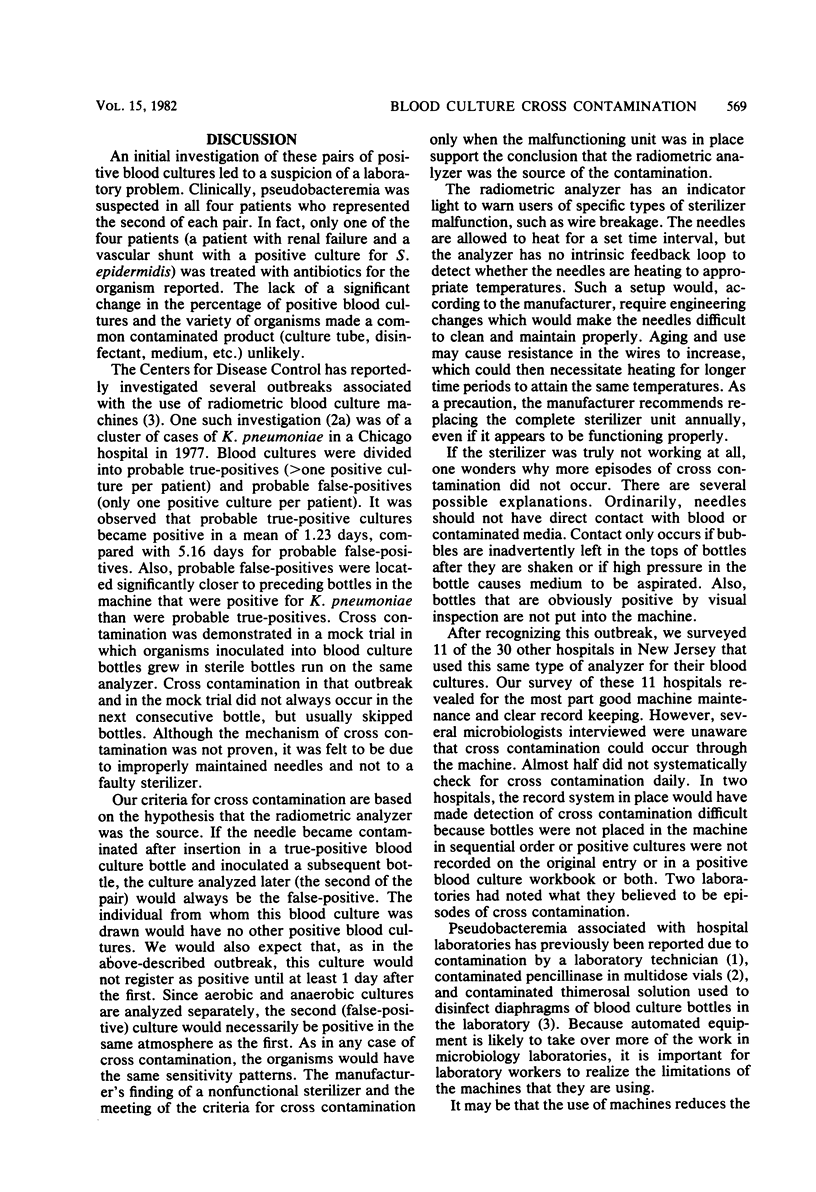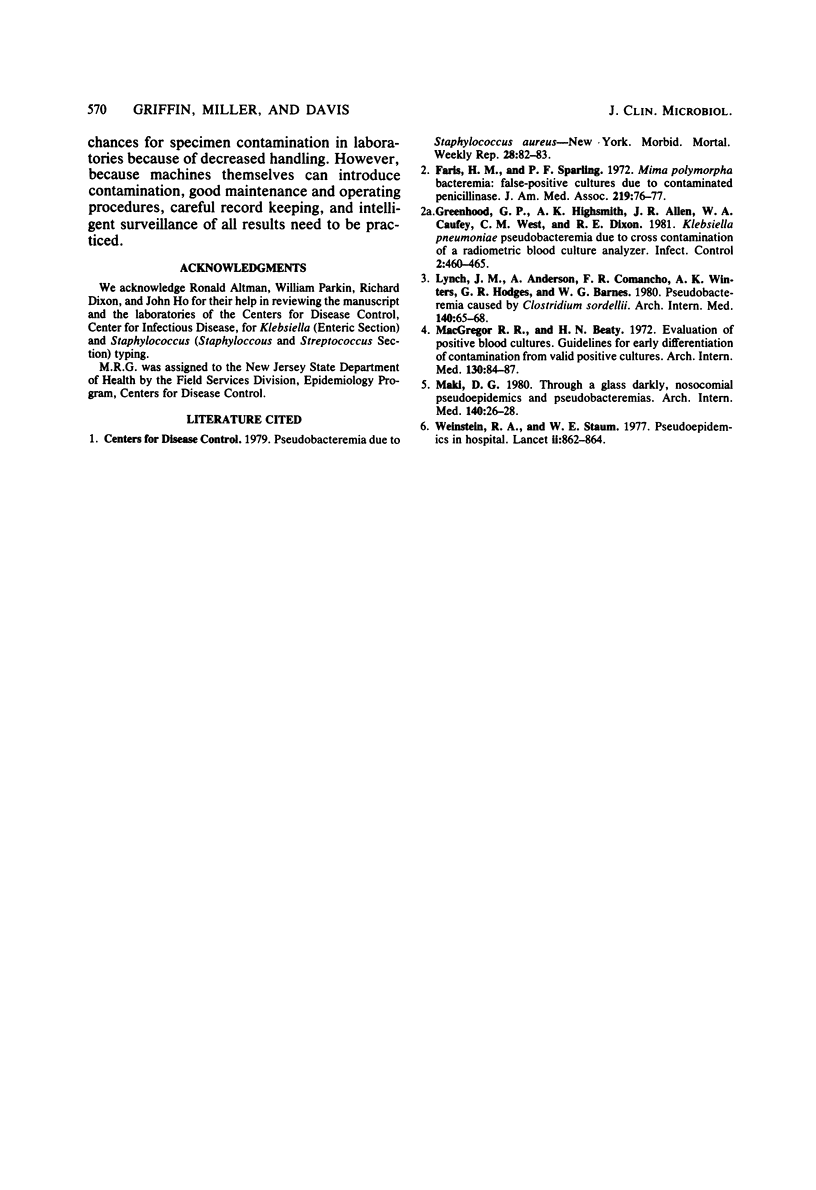Abstract
During a 9-day period in August 1980 in a New Jersey hospital, three pairs of consecutively numbered blood cultures from different patients were identified as positive for the same organism (two pairs of Klebsiella pneumoniae and one pair of group A Streptococcus), for each pair, both cultures were positive in the same atmosphere, both organisms had the same sensitivities, and the second of each pair grew at least 2 days after the first and was the only positive blood culture obtained from the patient. When the hospital laboratory discontinued use of its radiometric culture analyzer for 15 days, no more consecutive pairs of positive cultures occurred. Subsequent use of the machine for 9 days with a new power unit but the original circuit boards resulted in one more similar consecutive pair (Staphylococcus epidermidis). After replacement of the entire power unit, there were no further such pairs. Examination of the machine by the manufacturer revealed a defective circuit board which resulted in inadequate needle sterilization. Laboratories which utilize radiometric analyzers should be aware of the potential for cross contamination. Recognition of such events requires alert microbiologists and infection control practitioners and a record system in the bacteriology laboratory designed to identify such clusters.
Full text
PDF



Selected References
These references are in PubMed. This may not be the complete list of references from this article.
- Faris H. M., Jr, Sparling F. F. Mima polymorpha bacteremia. False-positive cultures due to contaminated penicillinase. JAMA. 1972 Jan;219(1):76–77. doi: 10.1001/jama.219.1.76. [DOI] [PubMed] [Google Scholar]
- Greenhood G. P., Highsmith A. K., Allen J. R., Causey W. A., West C. M., Dixon R. E. Klebsiella pneumoniae pseudobacteremia due to cross-contamination of a radiometric blood culture analyzer. Infect Control. 1981 Nov-Dec;2(6):460–465. doi: 10.1017/s0195941700055727. [DOI] [PubMed] [Google Scholar]
- Lynch J. M., Anderson A., Camacho F. R., Winters A. K., Hodges G. R., Barnes W. G. Pseudobacteremia caused by Clostridium sordellii. Arch Intern Med. 1980 Jan;140(1):65–68. [PubMed] [Google Scholar]
- MacGregor R. R., Beaty H. N. Evaluation of positive blood cultures. Guidelines for early differentiation of contaminated from valid positive cultures. Arch Intern Med. 1972 Jul;130(1):84–87. [PubMed] [Google Scholar]
- Maki D. G. Through a glass darkly. Nosocomial pseudoepidemics and pseudobacteremias. Arch Intern Med. 1980 Jan;140(1):26–28. [PubMed] [Google Scholar]
- Weinstein R. A., Stamm W. E. Pseudoepidemics in hospital. Lancet. 1977 Oct 22;2(8043):862–864. doi: 10.1016/s0140-6736(77)90793-0. [DOI] [PubMed] [Google Scholar]


